A Guide with Simple Tips To Follow For Weight Loss
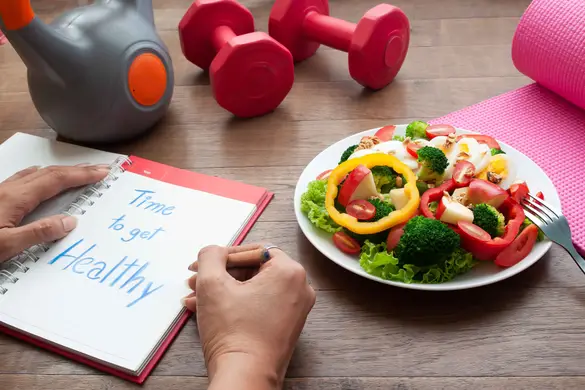
A Guide with Simple Tips To Follow For Weight Loss
Posted on 8th Nov, 2024
To achieve lasting, natural weight loss is more than just cutting calories or following restrictive diets. It's about maintaining habits and rules that work for your body.
For safe, steady weight loss, experts, including those at the National Heart, Lung, and Blood Institute, recommend aiming to lose 1–2 pounds per week for 6 months. This can often be achieved by reducing daily calorie intake by 500–1,000 calories.
This guide provides a simple and structured, approach to weight loss to help you reach your goals naturally.
Find Out If You Need Weight Loss: Check Your BMI
The first step in a weight-loss journey is to understand whether weight loss is necessary based on one's Body Mass Index (BMI).
Calculate your BMI here.
BMI CALCULATOR
BMI (Body Mass Index) indicates whether a person has a healthy weight for their height. Enter your height and weight to calculate your BMI.
- A BMI less than or equal to 18.5 = Underweight (You do not need weight loss)
- A BMI between 18.5 and 24.9 = Healthy weight (You need to maintain this body weight)
- A BMI between 25 and 29.9 = Overweight (You must start weight loss)
- A BMI of 30 = Obesity (You need to start weight loss and medical intervention)
Read more: Understanding BMI: The Key to Weight-Health Connection
A Daily Plan For Weight Loss
In this comprehensive daily plan for weight loss, we are offering essential strategies to support balanced weight management throughout the day. You can follow these simple steps to create a healthy approach to reaching your fitness goals.
Phase 1: Early Morning (Hours 1-3)
1. Hydration and Light Exposure
- Hydrate: Begin with 500 ml of warm water with lemon to boost hydration and metabolism.
- Sunlight: Get 5-10 minutes of morning sunlight exposure. This helps set your circadian rhythm, which improves sleep and supports metabolism.
2. Exercise and Eat Wisely
- Exercise: If possible, do 20-30 minutes of low-intensity exercise. The early physical activity raises energy levels for the day and starts calorie-burning. You can begin with a strength-building exercise that builds muscle mass. Try out these four exercises before hitting the shower:
- Jumping Jack
- Wall Push up
- Walking lunges
- Planks

- Delay Caffeine: Do not drink or consume tea or coffee for at least 60-90 minutes after waking to avoid an afternoon crash.
- Breakfast: Include protein and fiber to keep you full for longer.
Example: Oats with a handful of nuts and fruit. (about 300-350 calories).
Besan Chilla with chopped vegetables ( 150 calories each)
Tip: Avoid heavy carbs and sugars in the morning to prevent energy crashes later.
Phase 2: Mid-Morning (Hours 3-5)
1. Mindful Snacking and Movement
- Healthy Snack: Choose a small, nutrient-dense option like a handful of nuts, small fruit, or a glass of buttermilk.
2. Mini Movement Breaks: If possible, take short, 5-10 minute walks or stretching breaks every hour to keep your metabolism active.
Phase 3: Midday (Hours 5-9)
1. Lunch and Post-Meal Movement
- Healthy Lunch: Follow the “Healthy Eating Plate” method: Fill half your plate with vegetables, a quarter with protein, and another quarter with whole grains.
An example could be 2 rotis + dal + a mixed veg sabzi + salad.
- Take Post-Lunch Walk: A 5-10 minute walk after lunch can aid digestion and avoid afternoon sluggishness.
2. Energy-Boosting Techniques
- Stay Hydrated: Aim for another 500 ml of water by midday.
- Breathing Exercise for Focus: Practice cyclic breathing (20-25 quick inhales and exhales) to enhance focus and prevent the afternoon slump.
Phase 4: Late Afternoon to Evening (Hours 9-13)
1. Workout and Evening Snacks
- Workout: Do 40-55 minutes of moderate-intensity exercise if you didn’t in the morning. Include a mix of cardio and strength training for maximum calorie burn and muscle building.
- Post-workout Meal: Opt for a protein-rich meal like a boiled egg, peanut butter toast, or whey protein shakes for muscle recovery.
2. Early Dinner
- Keep it Light: Include protein and some complex carbs to fuel your body for rest.
An example could be a bowl of soup + salad + grilled paneer/fish with veggies.
Phase 5: Evening Routine (Hours 13-15)
1. Wind Down and Prepare for Sleep
- Limit Light Exposure: Reduce screen time 1-2 hours before bed and use dim lighting to signal to your body that it's nighttime.
- Hydrate: Drink a final glass of water (avoid over-hydration to prevent frequent wake-ups).
- Relaxation Technique: Use a few minutes of breathing exercises to signal your body to wind down.
Phase 6: Bedtime (Hours 15-24)
1. Optimize Sleep Quality
- Consistent Sleep Time: Try to sleep and wake at the same time each day and get a full 7-8 hours of rest.
Final Tips For Weight Loss Goals
Here are some essential tips to keep your weight loss goal on track:
Set Realistic Goals: Make a practical weight-loss target to prevent burnout, such as aiming for 1–2 kgs per week to ensure a steady rate of weight loss.
Reduce Your Calorie Intake: Reducing 500–1,000 calories from your daily normal intake is the best approach to support weight loss. However, stay nourished, and ensure including nutrient-dense meals throughout the day.
Keep Yourself Hydrated: Proper hydration is key to maintaining energy levels supporting metabolism and managing hunger. Aim for 2–3 liters (about 8–12 cups) of water daily.
Consider Weight Loss Supplements: Focus on lifestyle changes along with weight loss supplements like green tea extract, fiber supplements, garcinia cambogia, and L-carnitine. These are natural supplements aiding in appetite control, fat metabolism, and energy levels.
Prioritize Sleep and Manage Stress: Maintain a good sleep routine, aiming for 7–8 hours of sleep per night for healthy hormone balance. Additionally, include meditation or deep breathing techniques, to manage stress and prevent emotional eating.
Stay Physically Active: Aim for 150 minutes of moderate exercise or 75 minutes of vigorous exercise each week, along with two strength-training sessions to build muscle and boost metabolism.

Health articles from our experts
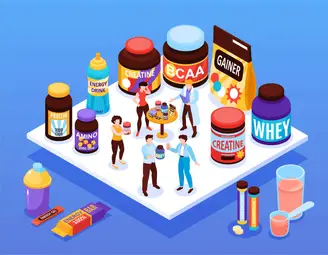
List of Top 10 Bodybuilding Supplements For Muscle Gains

List of 15 Best Gut-Friendly Foods
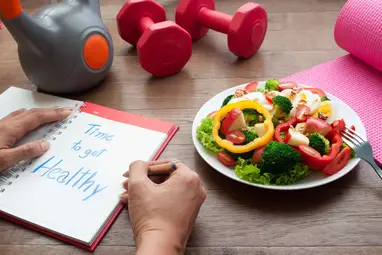
Top Six Indian Recipes for Weight Loss

A Comprehensive Guide On How To Gain Weight Quickly

Muscle-Building Routine and Supplements for Maximum Gains
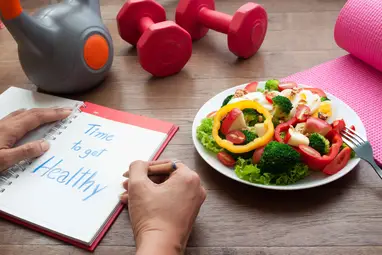
A Guide with Simple Tips To Follow For Weight Loss
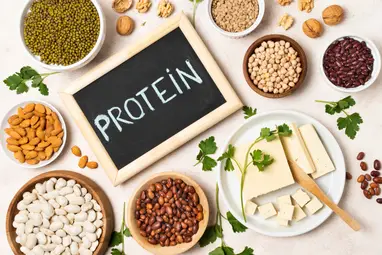
Top 10 Foods That Are High in Protein

5 Best Whey Protein Powders in India
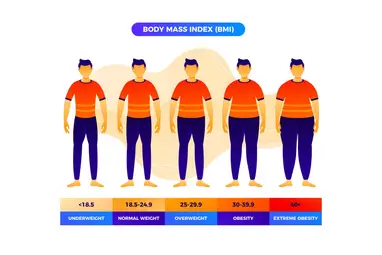
Understanding BMI: The Key to Weight-Health Connection

